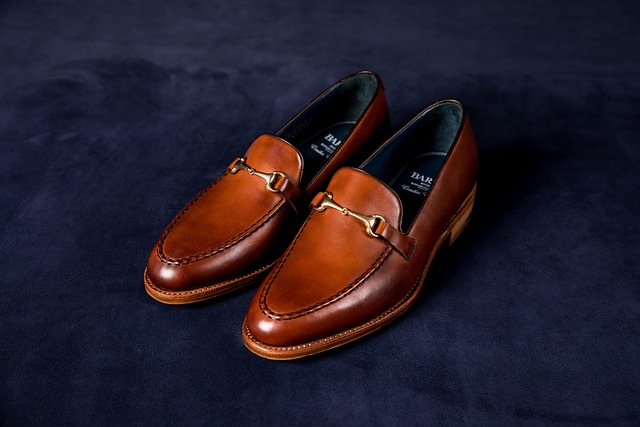Exploring Different Types of Shoes and Footwear
Shoes and footwear come in many styles for different activities and occasions. This article explains the materials, designs, and history of sneakers, boots, sandals, and more. Learn how shoes are made, what makes each type unique, and how people have enjoyed them throughout time.

What Makes Quality Shoes for Everyday Wear
Everyday footwear forms the foundation of most wardrobes, requiring durability, comfort, and versatility. Quality everyday shoes typically feature supportive insoles, breathable materials, and construction methods that withstand regular use. Leather and synthetic materials dominate this category, offering different benefits in terms of maintenance and weather resistance. Many everyday shoes incorporate cushioning technologies and arch support to reduce foot fatigue during extended wear. Popular everyday options include loafers, casual oxfords, and slip-on sneakers that transition easily between different settings and activities.
Understanding Various Types of Footwear Categories
Footwear categories span numerous styles, each engineered for specific purposes and occasions. Athletic shoes include running shoes, cross-trainers, and sport-specific designs optimized for particular activities. Dress shoes encompass formal options like oxfords, brogues, and dress boots suitable for professional environments. Casual footwear bridges the gap between athletic and formal styles, featuring boat shoes, canvas sneakers, and lifestyle shoes. Specialized categories include work boots for industrial environments, hiking boots for outdoor adventures, and sandals for warm weather comfort. Each category employs different materials, construction techniques, and design philosophies.
Features of Effective Shoes for Walking
Walking shoes prioritize comfort, support, and shock absorption to accommodate extended periods of movement. Key features include cushioned midsoles that absorb impact, flexible outsoles that facilitate natural foot motion, and supportive heel counters that maintain proper alignment. Quality walking shoes often incorporate moisture-wicking linings and breathable upper materials to maintain foot comfort during extended use. The toe box should provide adequate space to prevent cramping, while the overall fit should secure the foot without creating pressure points. Many walking shoes feature lightweight construction to reduce fatigue and specialized tread patterns for enhanced traction.
Stylish Sneakers for Men and Women Design Elements
Contemporary sneakers blend performance features with fashion-forward aesthetics, creating versatile options suitable for various occasions. Modern sneaker design emphasizes clean lines, premium materials, and sophisticated color palettes that complement both casual and semi-formal outfits. Technology integration includes responsive cushioning systems, engineered mesh uppers for breathability, and lightweight construction methods. Gender-specific designs consider different foot shapes and style preferences while maintaining core performance features. Popular trends include minimalist designs, retro-inspired silhouettes, and sustainable materials that appeal to environmentally conscious consumers.
Comfortable Boots for All Seasons Characteristics
Seasonal boots adapt to changing weather conditions while maintaining comfort and protection throughout the year. Winter boots feature insulation, waterproof materials, and aggressive tread patterns for snow and ice traction. Spring and fall boots balance weather resistance with breathability, often incorporating leather or synthetic materials that handle moisture without excessive bulk. Summer boots, including lighter hiking styles and fashion boots, emphasize ventilation and lighter construction. Quality boots across all seasons share common features like supportive ankle construction, durable outsoles, and comfortable footbeds designed for extended wear.
| Boot Type | Season | Key Features | Price Range |
|---|---|---|---|
| Insulated Winter Boots | Winter | Waterproof, thermal lining, aggressive tread | $80-300 |
| Leather Ankle Boots | Fall/Spring | Water-resistant, moderate insulation | $60-250 |
| Hiking Boots | Summer/Fall | Breathable, supportive, durable construction | $70-400 |
| Fashion Boots | All Seasons | Style-focused, lightweight, versatile | $40-200 |
Prices, rates, or cost estimates mentioned in this article are based on the latest available information but may change over time. Independent research is advised before making financial decisions.
Selecting Appropriate Footwear for Your Lifestyle
Matching footwear to individual lifestyle requirements involves assessing daily activities, work environments, and personal style preferences. Active individuals benefit from investing in quality athletic shoes and supportive casual options that accommodate frequent movement. Professional environments may require dress shoes and polished casual options that maintain appropriate appearance standards. Climate considerations influence material choices, with breathable options for warm climates and weather-resistant features for areas with significant precipitation. Budget allocation should prioritize frequently worn categories while considering the cost-per-wear value of quality footwear investments.
Understanding different types of shoes and footwear enables informed purchasing decisions that balance comfort, functionality, and style. Each category serves specific purposes while offering various options to accommodate individual preferences and requirements. Quality footwear represents an investment in daily comfort and long-term foot health, making careful selection essential for overall satisfaction and value.




